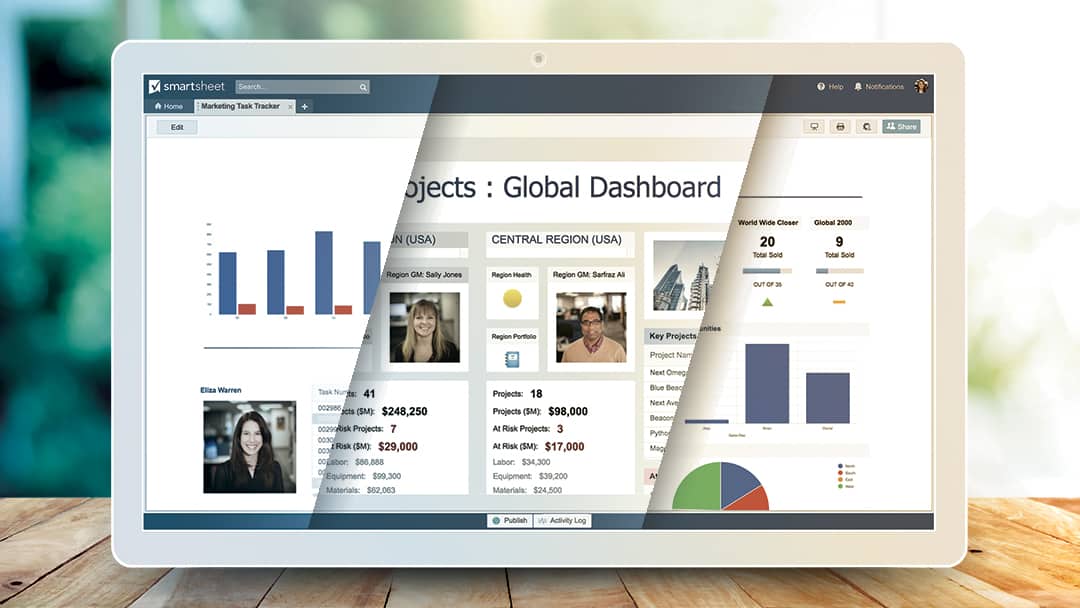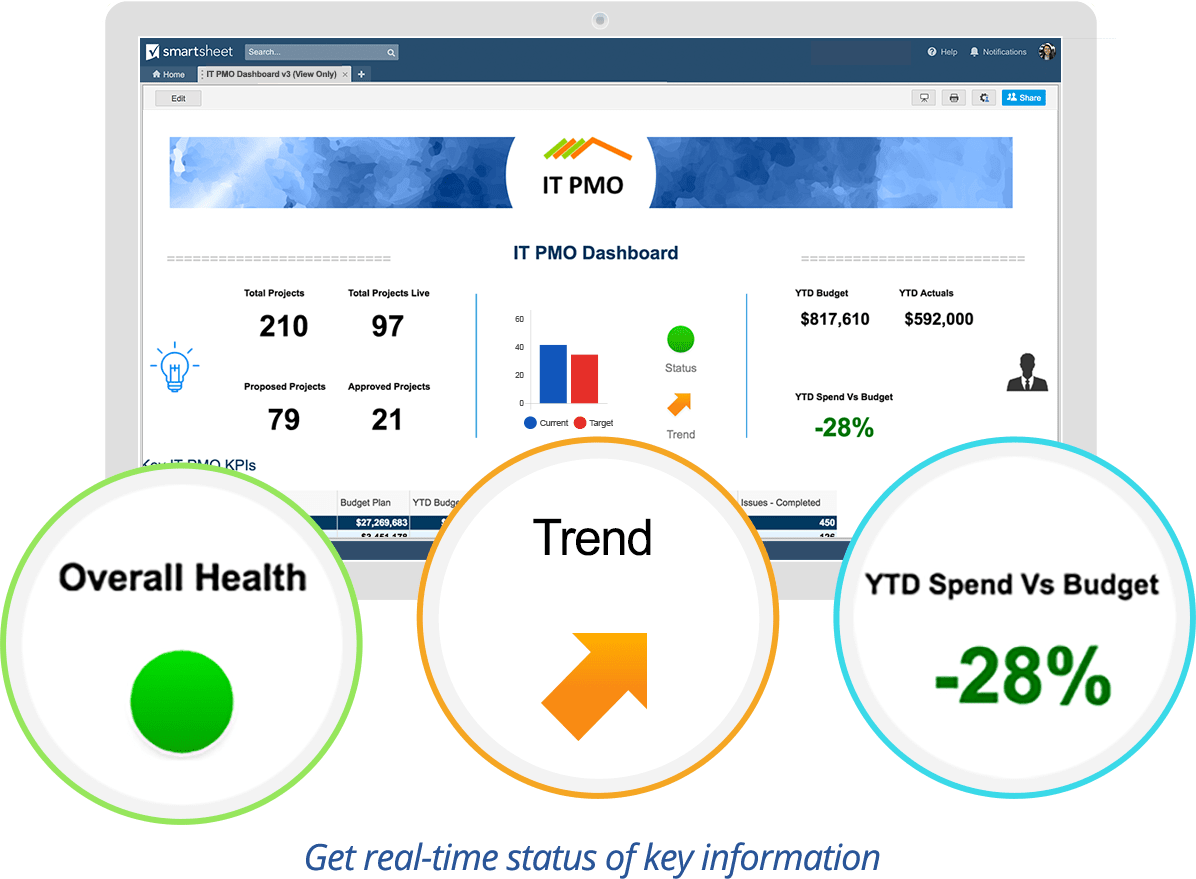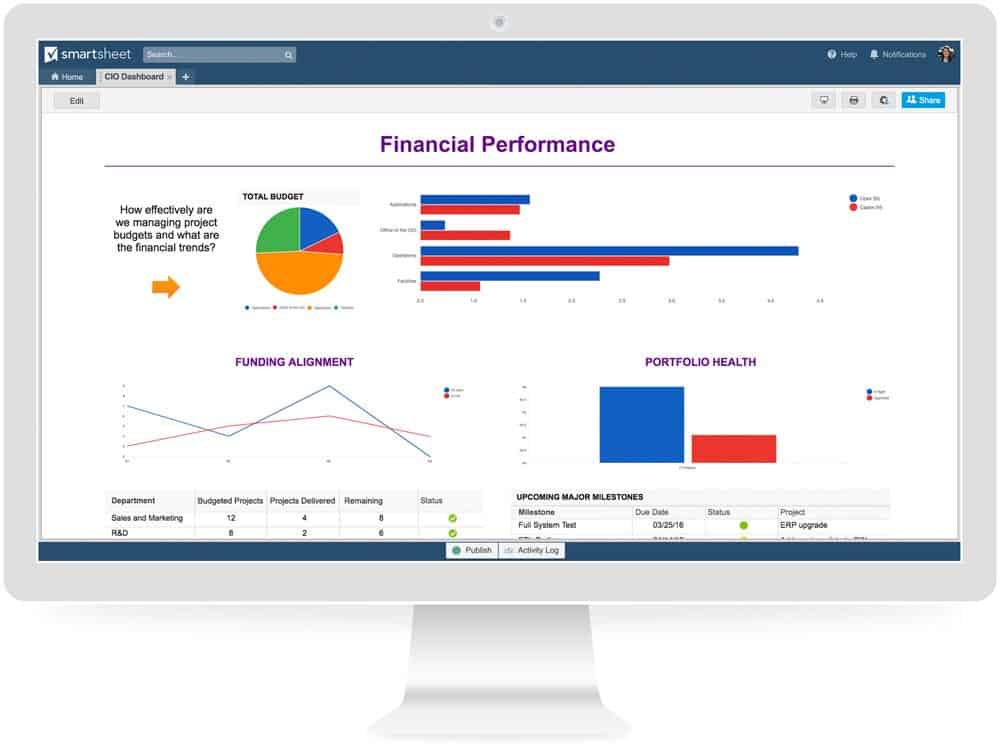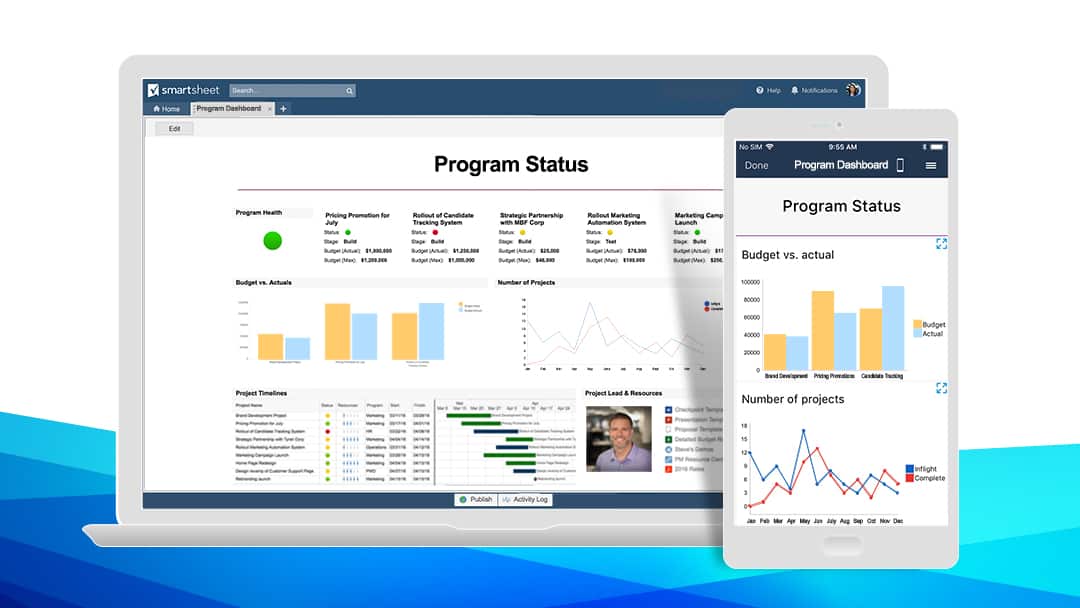Executive dashboards are powerful business tools that can connect leaders to their entire organization through insightful data streams.
Embracing critical layers of visibility can make businesses more competitive by strengthening connections between C-level leaders, managers, individual contributors, and their stakeholders. In addition, company-wide visibility into key performance indicators (KPIs) and business critical information help connect employees to the company’s strategic vision. Executive dashboards deliver the right information from different departments, helping business leaders make the best decisions.
Using Smartsheet Dashboards, executives can save time and assess performance against initial strategies, enabling them to test hypotheses with an eye on continuous improvement. Once they get their teams thinking in organized, data-driven terms, executives could see boosted employee performance, increased profitability, and less procedural waste. This strategic simplification connects meaningful metrics and data — accessible on both desktops and mobile devices — and moves teams from insight to action.
While you can customize executive dashboards in a variety of ways, below are three categories that will help drive better organizational alignment, consolidate insights for faster decision making, and help people stay organized and informed across teams.
Strategic dashboards for organizational alignment
It can be challenging for business leaders to get real-time data themselves. Strategic dashboards improve visibility by displaying KPIs with birds-eye-view visualizations. With Smartsheet, executives can get access to performance metrics that matter to their company. To ingrain habitual transparency at all levels, team leaders can display their KPIs on larger monitors or screens, so passers-by can see the performance in real time. Here are two examples of strategic dashboards:
-
Finance Dashboard: A big-picture, easy-to-interpret financial summary that includes targets met, cash flow, return on investment (ROI), and metrics that outline financial distribution across their entire company, updated in real time.
-
IT Dashboard: A roll-up view of the entire portfolio to compare current spend, track budget versus actuals, and analyze portfolio health. This real-time overview can include funding allocation by category and department.
Tracking performance over time with strategic dashboards enables teams to prepare for upcoming milestones and plan countermeasures when there is a need for strategic pivots.
Analytical dashboards to consolidate insights
Analyzing historical trends can lead to continuous improvement from the executive suite down to the team level. Using an analytical dashboard, you can drill down into various performance metrics and KPIs.
With dashboards, you can see essential information — whether it’s revenue growth, lead generation and conversion performance, or profit margins — via various visual representations.
Related
Cisco Drives Decisions With Dashboards
Analytical dashboards are typically more intricate than strategic or operational dashboards, as they are a composite of data collection over customized periods of time. Visualizing data with charts optimizes your ability to spot data trends with a simple eye test. Trends tell you what is happening over time in your business, point to potential root causes, and can be used to support decision making.
Operational dashboards to stay informed
Operational dashboards provide reliable visibility into daily business processes and how well teams are performing. Whether on a task-by-task basis or aligning to broader company objectives, having access to real-time information empowers teams to take immediate actions, identify and share new opportunities, and exchange key learnings. Here are three examples of dashboards people can create in this category:
-
Human Resources Dashboard: HR departments can customize their dashboard to track projects, timelines, hiring statuses, onboarding procedures, employee programs, and budget. The dashboard can provide easy access to essential updates to employee benefits, handbooks, travel policies, and much more.
-
Program Management Dashboard: Project and program managers can track productivity KPIs and task statuses across departments while ensuring better visibility by centralizing important process documents, reports, and resources. Transparency into projects and processes can help PMs target areas of improvement and reduce operational inefficiency.
-
Sales Pipeline Dashboard: With sales-focused dashboards, leaders gain detailed visibility into activities and progress needed to track sales pipeline activity, key metrics, and deal status. They can also analyze performance metrics in different ways to look for any potential weaknesses or strengths.
Related
Make Better Decisions Faster With Dashboards
Smartsheet executive dashboards can be comprised of data insights and resources from around your entire organization, connecting disparate business groups into a cohesive ecosystem. Having access to the right information at the right time gives you a strategic advantage, as there is less time wasted requesting data reports or chasing down stakeholders for corroboration. All in all, visibility into departmental health leads to improvement opportunities, better-informed decision making, and faster execution.
To learn more about what Smartsheet Dashboards can do for your business, watch the video below:






